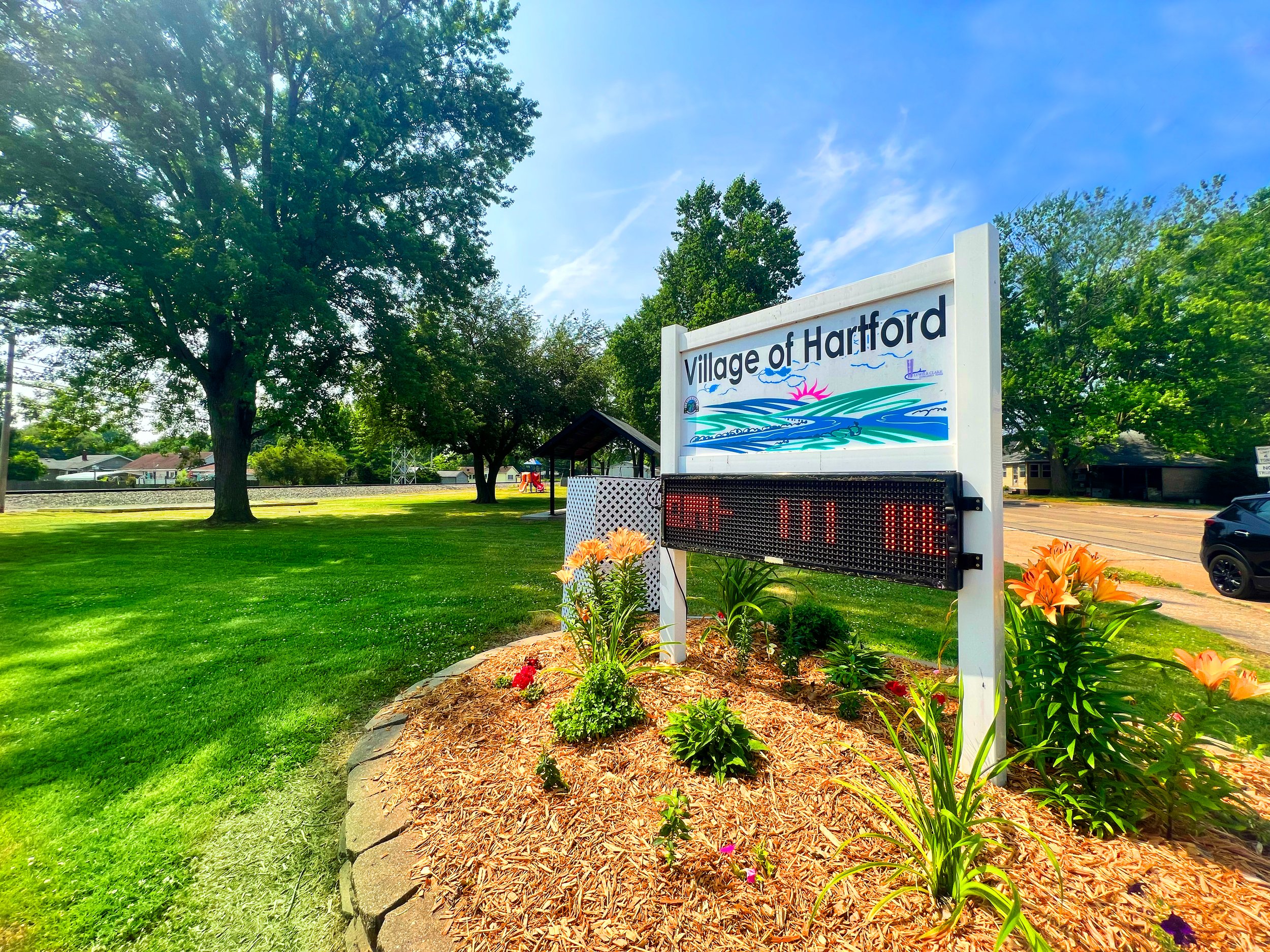
About Hartford, Illinois
Hartford, Illinois is a small industrial community located in southwestern Illinois 20 minutes from downtown St. Louis, at the confluence of the Missouri and the Mississippi River. Hartford is an ideal place to locate a business. It is a hub of transportation providing direct access to rivers, railroads, airports and highways. Located on the east bank of the Mississippi River at the mouth of the Missouri with building sites available along three major railways, with direct access to Interstate highways. Business sites are available for either commercial development or industrial development. In addition Hartford is the home of Camp DuBois, the winter encampment of the famous Lewis and Clark Expedition.
Location, Location, Location "A good place to live and work" The Village of Hartford is the quintessential Midwestern community, providing big city benefits with small town friendliness. Our Midwestern work ethic allows things to get done in an efficient and timely manner. Villagers work hand-in hand to improve their neighborhoods and to help one another. This town of 1545 residents is comprised of friends and family most of whom know each other. This sense of community promotes a safe and comfortable environment in which to live. Many services are available, including police and fire protection, an active public library, strong school system, and a low tax rate. In short, Hartford is a wonderful place to live and do business.
Our History
Hartford Illinois is located at the confluence of the Mississippi and Missouri River. In 1910, near what is present day Hartford there were approximately six houses in the area. From Wood River south, there lay two main railroads: the Big 4 and the Chicago; Peoria and St. Louis. Directly to the west, to the Mississippi River ran a spur railroad track which conveyed materials to and from the river. Rand Avenue was the main road to Edwardsville. Between the Big 4 and the C.P, and St.L lay the Illinois Transit tracks, which carried passengers between Alton and St. Louis. On the west at what is presently known as Old St. Louis Road lay the main artery of transportation between the Wood River area and St. Louis. A depot, a railroad section house, and a saloon stood between the rail lines.
This area which is now part of the Hartford village limits was open, level valley farmlands, except for rather dense wooded area along the river. To the east of the Mississippi River grew heavy set timber of ash and elm. This was lumbered during the 1920's. Adjacent to this wooded area stood a pecan grove. These trees were destroyed by the building of the levee. This grove was a popular place for picnics and outings. In addition these pecan trees were a source of nutmeats which enhanced holiday cooking and baking.
1929 The grounds of the International Shoe Co.
Hartford tannery included a hotel/boarding house for workers.
1923 Pappy Hall’s Station
In 1910 the residents consisted of a saloon keeper, a telegrapher, section hands, several farm families and their farm hands. The first house in the area of modern day Hartford was a log ranch house occupied by the family of H.J. Bowman. Mr. Bowman owned 860 acres of land in what is present day Hartford. Joe Mayes was another original resident of the area, owning a farm from Hawthorne Avenue to Seventh Street. Mr. Mayes, like Bowman farmed corn, wheat, and timothy.
During this period it was not uncommon to hear in the distance the sound of a calliope. As it grew stronger in sound one could hear the swish and plump of engines. This sound announced the arrival of the Showboat. This boat would pull in to land for some evenings of entertainment. At such times everyone was on hand on the shores of the Mississippi to welcome it, and enjoy it to its fullest. The gaiety made infectious by the strumming of guitar, banjo, piano, with the amusing, plaintive, ballads, folk songs, and dance songs of that era.
The economic status of the residents here at that time, until the International Shoe Tannery came in, was as far as could be estimated, much as any early farmers in this area. Perhaps a bit more prosperous, due to the river transportation, railroads, the full, fertile, level valley soil which encouraged crop growth. Many people raised an abundance of potatoes. These people were affectionately known as "Spud Miners". Staple groceries and hardware's were purchased in Wood River, Alton, and St. Louis. The first store erected in present day Hartford was Tomlovic Store, on Delmar and Elm Street.
In January of 1920, the people living in the territory known as Hartford thought it would be best for the general good of all concerned that a village should be incorporated. An election was held on March 6, 1920 and result in a vote of 55 for the organization and 2 against. An election was held under an order of the County Court on April 20, 1920. Kirby Turpin, president; trustees: Anton Brown, Tom Davis, R.S. Emery, John Huffard, E. March, Al Toennis; Clarence West, Village Clerk and Frank Fulkerson Police Magistrate.
On May 4, 1920 the first regular meeting of the board was held at the Woodrow Wilson School at 7:30p.m. Hartford, before organizing was at one time known as Edwardsville Crossing, later as South Wood River. Kirby Turpin was the first mayor or president of the Board of Trustees. The Village of Hartford started as a rail, river, road and commercial oriented community, where it remains today. Three rail lines cross the community along with heavily traveled Route #3. A transportation hub, allowing people and products to get to market.


